“In 1911, the music journal Onagakukai published an article entitled ‘Teikoku Gekijo to Kageki’ (The Imperial Theater and Opera), written by a certain Gyokugan (a nom de plume used by Komatsu Kosuke).
“… The title of the article refers to an event of March 1911: the opening of the long-awaited Teikoku Gekijo (The Imperial Theater) with the foundation of a philharmonic orchestra to which August Junker and Heinrich Werkmeister (both professors at the School of Music) were appointed as conductors.
“Six months later an opera company was started; the soprano Shibata (Miura) Tamaki was engaged and the first productions were staged shortly after. The theater’s declared aims were ‘to use its status as an international institute of culture dedicated to Kabuki and the other Japanese dramatic arts to make these art forms better known and, as a modern theater association, to provide a model for their development.'”
– Yogaku: Japanese Music in the 20th Century, Luciana Galliano, 1998
“Theater” to most Edokko, a hundred years ago, still meant Kabuki and Noh. Japan’s onward Westernization at the turn of the century, however, challenged local playwrights to mount Western-style operatic and musical productions that would appeal to growing cosmopolitan tastes.
The Teikoku Gekijo Kaisha [Imperial Theatre Company] was founded in 1910 with the purpose of building Japan’s first Western-style theater and producing the country’s first non-Japanese theater programs. The result was the Teikoku Gekijo [also known as Teigeki] completed in 1911 on land directly across from the Imperial Palace plaza in the Marunouchi district. The four-story building was designed in a Renaissance style by Yokogawa Tamisuke (1864–1945), a renowned architect (and founder of Yokogawa Electric Co. in 1915) who was also responsible for the design of the Mitsukoshi department store completed in 1915.
“The beauty and excellence of the [Imperial Theater] cannot be denied. The building is both fire-proof and proof against damage by earthquake. The preparation of the site comprised the driving of 15,000 piles, 18 to 21 feet long, into the ground, and binding them into a solid mass with reinforced concrete filling.
“The foundations of the building were then laid 15 feet below the surface of the ground, and upon them was erected the steel frame, which is filled in with bricks. The design is of the Renaissance, and the whole conception is pleasing to the eye.
“… Surmounting the front arched roof is the figure of the God of Good Luck. The entire outside walls of the theatre are faced with pure white tiles from Imbe, a place in Bizen Province [present-day Okayama Prefecture] famous for its manufacture of tiles.”
– Present-Day Impressions of Japan, W. H. Morton Cameron, 1919
- Imperial Theatre, interior, c. 1920.
- Imperial Theatre, interior, c. 1920.
The Imperial Theater’s first fully translated production was staged in 1911 — “Hamlet,” performed by the Bungei Kyokai [Literary Arts Society]. Other productions were not without controversy. An early production of Puccini’s “Madame Butterfly” was adapted to include an epilogue composed of traditional Japanese songs and the Kimigayo [national anthem] — as counterpoint to the opera’s Euro-centric themes of colonialism and East-West relations.


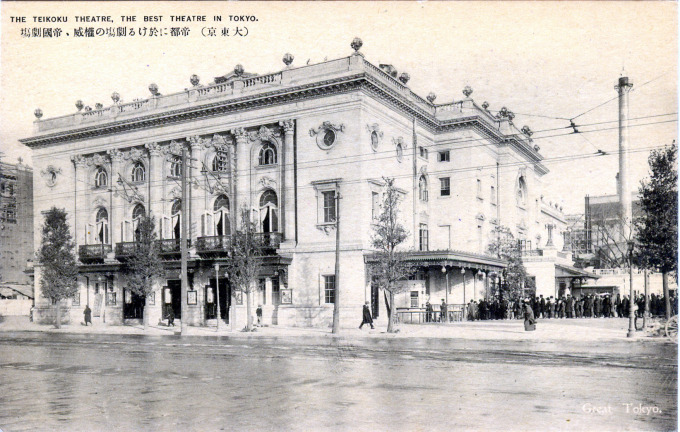
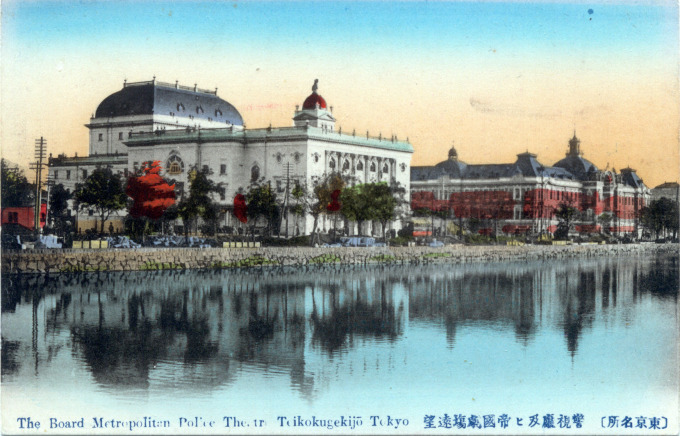
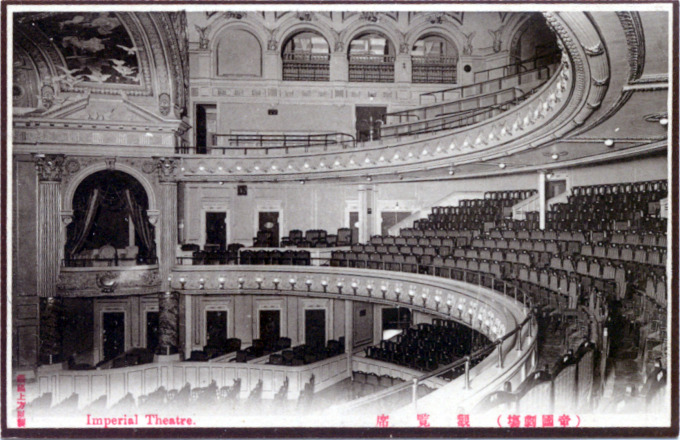
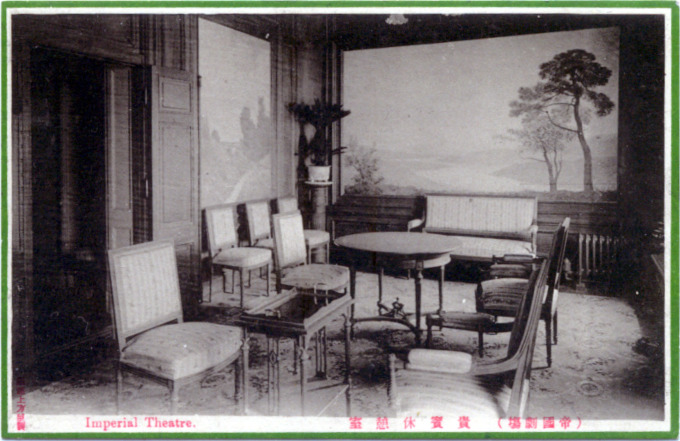
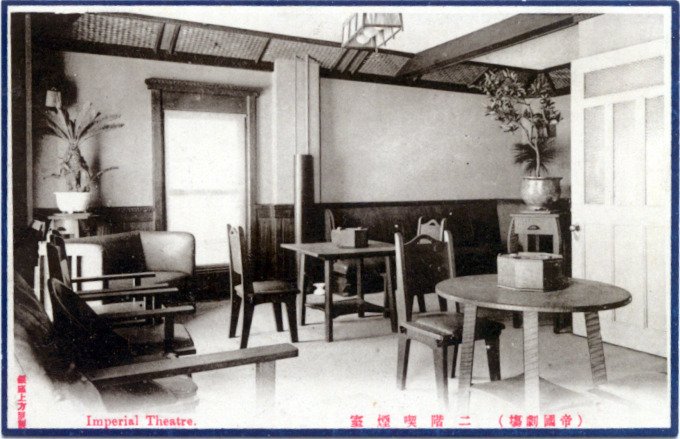
Pingback: Tokyo Kaikan, c. 1930. | Old Tokyo
Pingback: Aerial Views of Tokyo, c. 1940. | Old Tokyo
Pingback: The 8th World’s Sunday School Convention, Tokyo, 1920. | Old TokyoOld Tokyo